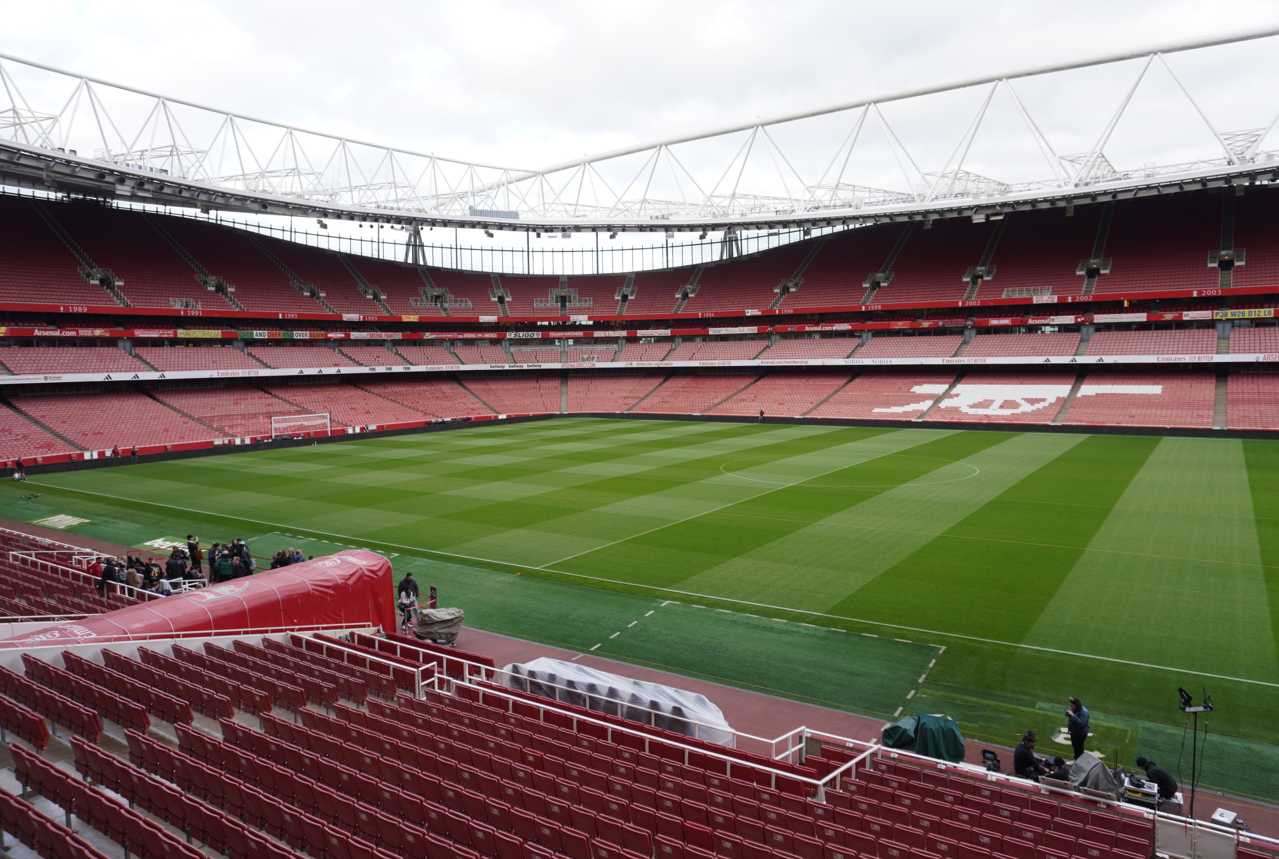- Home
- Travel Guide

The Emirates Stadium, in Holloway, North London, is the home to the mighty Arsenal Football Club, one of the dreadnoughts of English and European football. Since its opening in 2006, the Emirates Stadium has stood as almost a secondary mascot of the football team, replacing the historic and beloved Highbury. The Emirates Stadium marked a transition to a more modern, speedier, and bougie era of football, where it shone amongst the other, much-coveted London stadiums. With a capacity of over 60,000 spectators, it’s one of the nation’s largest sports venues.
Outside of football, the Emirates regularly hosts international concerts and other events, setting its status as a significant entertainment hub in its own right.
Railway stations and tube stops surround the Emirates Stadium, so it’s an ideal station to get to by train. Travelling by train also helps you bypass all the London traffic and inconvenience, placing you right at the heart of the action.
This article provides a summary of the Etihad Stadium, offers the easiest way to get there, and includes details on travel tips and ways to save money when booking train tickets.

About the Emirates Stadium: the essentials
The Emirates Stadium is a world-class, UEFA Elite-rated stadium and one of the largest in the UK. In 2006, when the stadium relocated from Highbury to the Emirates, it was imbued with what was known as ‘Arsenalisation’, which instilled the modern stadium with the club’s history and character. The club added murals, iconic imagery, and statues of famous club legends, such as Arsene Wenger and Thierry Henry.
The stadium features a striking four-tiered "bowl" design, ensuring optimal views from every seat. Its architectural design language is defined by sleek, curved lines and state-of-the-art, technologically and environmentally friendly facilities. The hybrid grass pitch is widely recognised as one of the world's finest, for example.
Notably, the stadium hosted Olympic football matches during the London 2012 Olympic Games, and it also hosts concerts, such as those by The Arctic Monkeys in 2023 and Robbie Williams in 2025.
Getting to the Emirates Stadium by train
The nearest trains to the Emirates Stadium are Highbury & Islington and Finsbury Park, which are both around a ten-minute walk away from the stadium.
There are also stations on the London Underground nearby, such as Arsenal Station, which runs on the Piccadilly Line, as well as Highbury & Islington on the Victoria Line and the London Overground, and Finsbury Park, which runs on both the Victoria and Piccadilly Lines.
If you’re travelling in from elsewhere and stop at some mainline London stations like Kings Cross, Euston, or St Pancras, then you can easily catch the tube to one of the tube stations near the stadium. If not, then you can catch a connecting train to Finsbury Park or Highbury & Islington.
1: London Blackfriars to Finsbury Park
The journey from London Blackfriars to Finsbury Park takes only fifteen minutes with Thameslink. Trains leave around every twenty minutes.
2: Cambridge to Finsbury Park
Getting from Cambridge to Finsbury Park takes, on average, around fifty-eight minutes with Thameslink. Alternatively, it takes one hour and eighteen minutes with Great Northern.
3: Moorgate to Highbury & Islington
It takes only eight minutes to get from Moorgate to Highbury & Islington with Great Northern.
What to do at the Emirates Stadium?
If you’re a proper paid-up, pie and mash, badge-wearing Gooner with all the trimmings, then you’re going to have to pay your respects at the Arsenal Museum, located within the Emirates Stadium itself. The museum houses trophies, historic kits from years gone by, and displays that bring the club’s long and revered history to life for fans old and new.
Of course, no visit to the Emirates Stadium is complete without taking in a proper tour. There are many different kinds of tours available, but all of them allow visitors to go behind the scenes and explore places like the manager’s dugout, stand pitch side, and much more. The Armoury, the club’s gigantic retail space, is also a great place to stop by and stock up on some merch.
Surprisingly to some visitors, the stadium is actually near a residential area. However, fear not; it boasts excellent public transport links to Central London via the tube. In just a short journey, you can be in Camden Market, visiting the historic façade of Arsenal’s former Highbury ground, or sipping on some beers in Covent Garden.
Travel tips for visiting the Emirates Stadium
As the UK’s capital, London can be hectic even on non-match days. But when there’s a match on, or even multiple matches on the same day at different clubs around the city, then, as you can imagine, it’s going to be super hectic.
If it’s busy, it’s busy. There’s not much you can do. But you can help mitigate these circumstances by planning extra time for your journey, getting to the Emirates Stadium at least one hour before kick-off, and checking live travel updates to ensure you don’t get caught up in any delays or disruptions.
It’s also a great idea to book your tickets in advance, as it will save you money and peace of mind. Travelling off-peak if you can and adding a Railcard will also save you some money, too. If you are using public transport to the Emirates Stadium, then you can use your Oyster card at Arsenal Station, which is on the Piccadilly Line.
Conclusion
Its handy location in North London and its excellent links to public transport and the railway mean getting to the Emirates Stadium is easy with a bit of forethought and good old-fashioned planning.
Booking your train ticket in advance really helps, too. That’s why it’s best to use TrainPal to search and book the cheapest train tickets.
Explore more stadium guides

- About the Emirates Stadium: the essentials
- Getting to the Emirates Stadium by train
- What to do at the Emirates Stadium?
- Travel tips for visiting the Emirates Stadium
- Conclusion
- Explore more stadium guides












 New user welcome pack
New user welcome pack